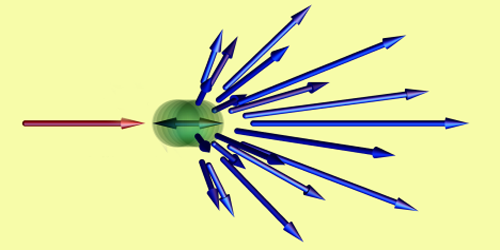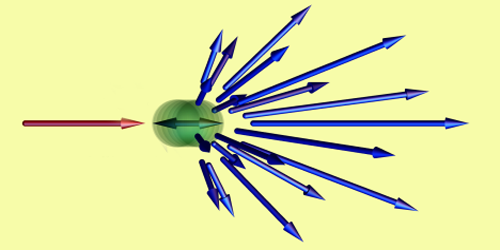Controlling Light with Trembling Nanoparticles
Devices that control the direction of scattered light would be useful to steer signals in nanophotonic circuits. It was proposed in the 1980s that such directional behavior could be achieved through the so-called Kerker effect, in which light is scattered by particles that have comparable magnetic and electric susceptibilities. However, materials with the required magnetic properties do not exist in nature. Now, Alexander Poshakinskiy of the Ioffe Institute in Russia and Alexander Poddubny of the Australian National University have shown that a similar effect can be achieved if the scattering particles “tremble.”
Like the conventional Kerker effect, the new optomechanical effect relies on the interference between the magnetic and electric dipoles excited in the particle by an incident wave. Typically, the magnetic dipole of a small scatterer would be far too weak to interact sufficiently with the electric dipole. The authors show, however, that the particle’s vibrations can create magnetic and electric polarizations that can interfere appropriately. As long as scattering is inelastic—the photon gains or loses energy in the process—certain vibrational modes strongly suppress scattering in the forward or backward direction for light at specific frequencies.
The authors show that the effect can be achieved in a frequency range from visible to radio by choosing different scattering media, such as superconducting quantum interference devices, 2D materials, or cold atoms. One envisaged application is a nanoscale optical diode, which transmits light in only one direction when applied acoustic waves create vibrations in the device. The researchers also show that the approach could realize an optomechanical analog of the spin Hall effect, in which different circular polarizations of light are scattered preferentially in the forward and backward directions.
This research is published in Physical Review X.
–Marric Stephens
Marric Stephens is a freelance science writer based in Bristol, UK.





